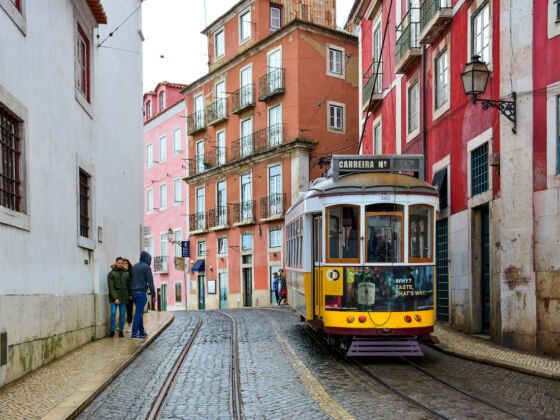WALLS CAN TELL the story of a place. In an old part of Lisbon, Camilla Watson has turned these stories into photos displayed on the walls of a local courtyard.
After reading about her work in 24 hours in Lisbon, I wanted to know more. I walked up through the weaving alleyway of Beco das Farinhas. Some of the white walls were peeling while others had fresh paint. Multi-colored tinsel dangled across the courtyard and over a broken fountain. Young people walked through, shopping bags in arms, just like the elderly subjects in the photos they passed.
